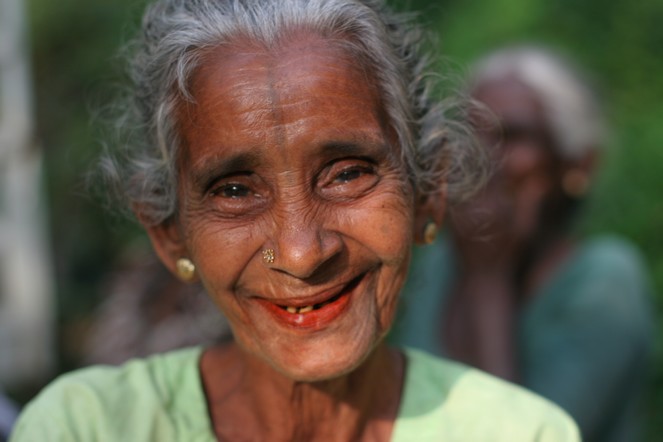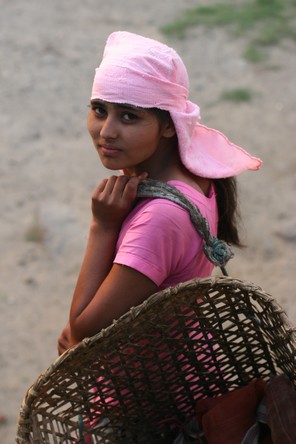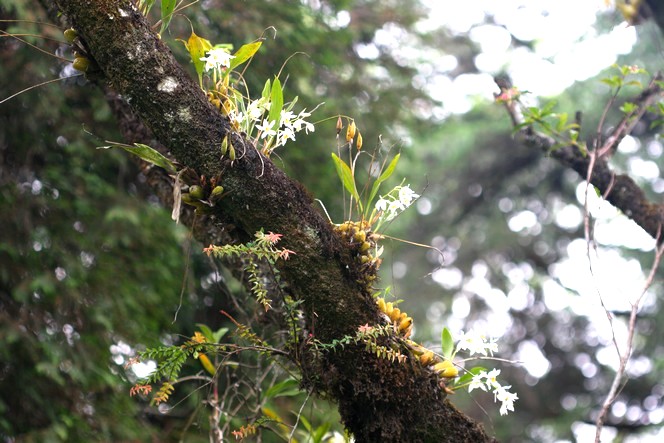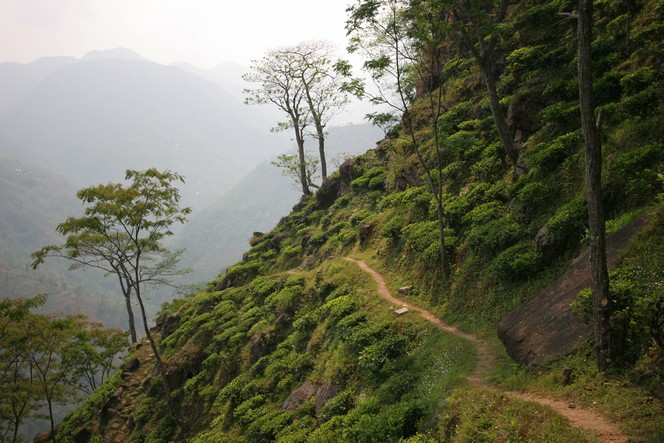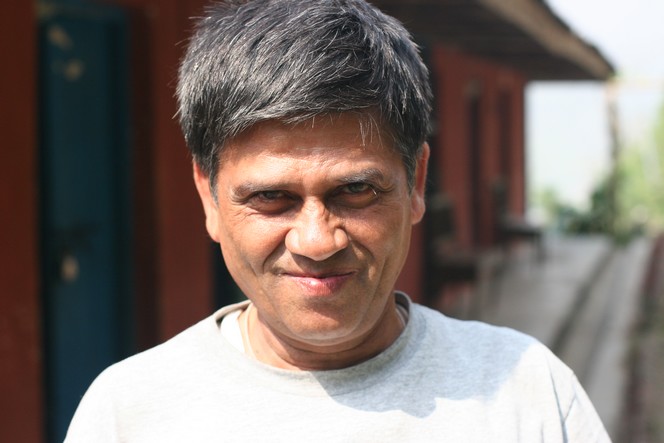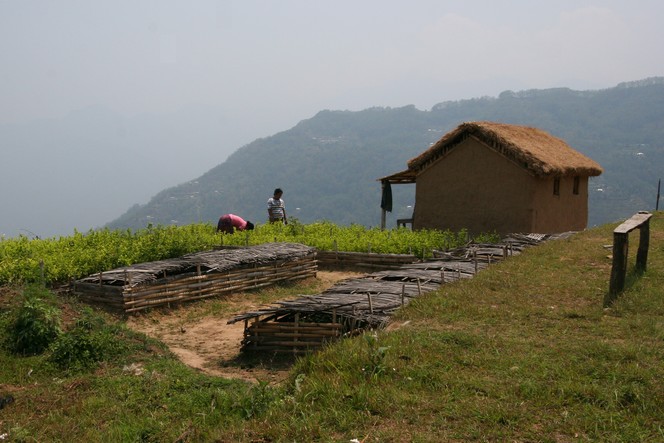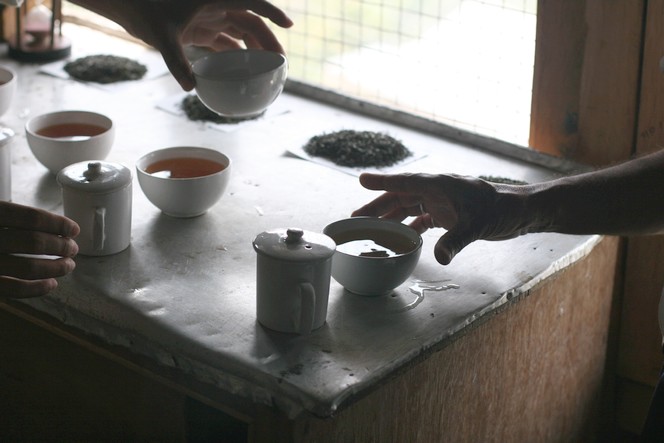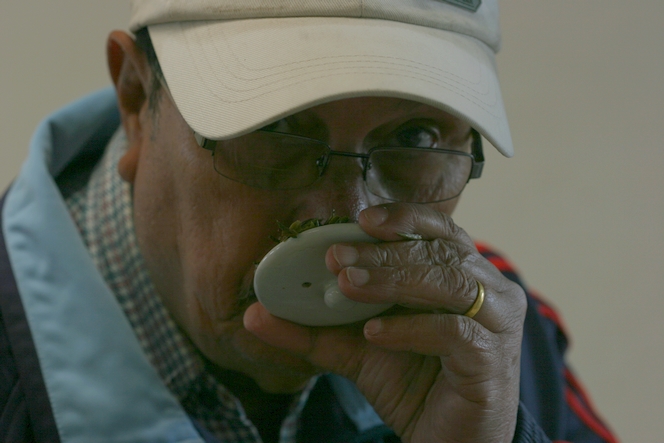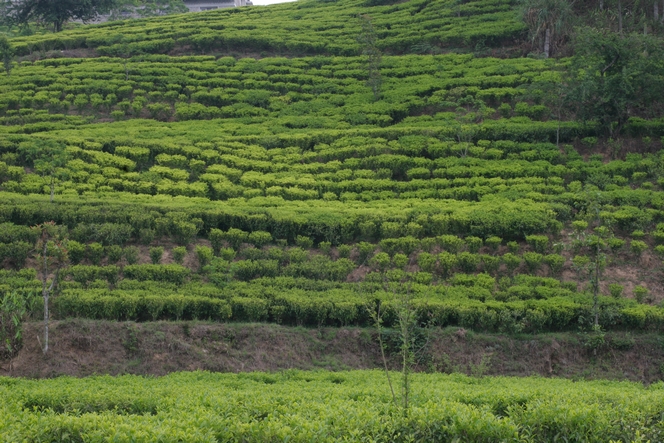The optimal storage period can vary a great deal from one tea to another. Green teas from Japan and China do not last long, and just a few months after harvest the difference in flavour is noticeable. The same goes for first flush Darjeelings. On the other hand, what are known as dark teas, the famous Pu Ers, get better with age. Lastly, many black teas as well as the most oxidised of the Wulongs often retain their qualities for years. Like this Nepalese plucker whose smile, charm and generosity are impervious to the passing of time.
Nepal
Fill your baskets with tea
This charming Nepalese tea plucker is setting off with her basket to harvest the young shoots of the tea bushes.
She reminds me of you all who, at this festive time of year, are out looking for things that will make your loved-ones happy.
Wild orchids growing around tea plantations
Spending your life in the tea fields does not prevent you from wandering around the tea plantations and raising your eyes to admire the nature around you. Here in Nepal, wild orchids grow right on the tree bark. Alongside them live many other delicately coloured flowers and mosses.
A Nepalese plantation in the middle of nowhere
For the first time, a few weeks ago, I bought a lot of a spring tea from the Kanchenjunga Tea Estate. This Nepalese plantation, situated in the middle of nowhere – two day’s travel across the Terai Plain – is one of the most promising in the country.
While there, you can admire the incredible steepness of the slopes as you realise how difficult it must be to harvest the leaves on such a gradient. As for this narrow path which snakes around the side of the mountain, and along which I have seen villagers walking, laden down like mules, it is the only route for the inhabitants of other hamlets located a few days’ walk from here.
Dilli Baskota, un passionné de thé au Népal
Je termine tout juste ma sélection annuelle de thés de printemps en provenance du Népal. Ils seront disponibles dans quelques jours, le temps de les acheminer par avion. Cette année ce sont les plantations de Guranse et de Kuwapani qui ont produits les meilleurs lots. Ils sont remarquables et si vous n’y avez jamais goûté, dépêchez-vous ! Ils valent le détour.
D’autres jardins ont fait de gros progrès et je viens de réserver deux lots correspondants : l’un en provenance de Everest Tea Estate et l’autre issu de Kanchenjunga Tea Estate- une plantation sublime située à l’extrême nord de la Vallée d’Ilam et dirigée par mon ami Dilli Baskota que vous voyez ici. Un homme passionné par le thé et très impliqué dans le développement durable de sa région.
Tasting new teas is like a bowl of fresh air
While many of you are taking advantage of the long weekend of the Ascension holiday to escape to the country, I’m in Paris at my tasting table with an impressive number of samples before me. I won’t have time to taste them all over the weekend. In Darjeeling, the harvests are over, but I’m now receiving new-season green teas from China, all very fine examples indeed. Every year, their vegetal aroma is like a big bowl of fresh air. I’m also getting sent most of the Nepalese teas which, in nearly a decade, have achieved excellent standards. New gardens are joining them and making themselves known. Excellence is worth waiting for – it has taken them years to reach this point. Just like these young tea plants, which are receiving such attentive care.
I taste about 50 teas a day
This March I’ve tasted about 50 samples of tea a day. The first flush Darjeelings launch the season, followed swiftly by the Nepalese teas. A little later it’s the turn of the new-season China green teas. Then the Japanese Ichibancha. The teas are tasted blind, of course. The ritual is always the same: having smelt the infusion, you suck in the liquor and swish it around your mouth. You analyse the texture, the flavours, the aroma groups. You take your time. You taste and you taste again. You have to concentrate… Except for when a photographer bursts into the tasting room and captures the moment.
Tea tasting: a special moment
Tea tasting is a special moment for me. While we wait for the teas to infuse, we talk, or we look at the dry leaves. Then, when the tea is ready, we exchange cups, without a sound. We inhale the aromas of the leaves, look at the liquor, and taste it. Then we compare it with the cup beside it. It is a moment of pleasure and of concentration. Hand movements are precise and slow. To me, this serenity is important in order to appreciate all the pleasures offered by a cup of tea.
Smelling the wet tea leaves : an essential step
When you taste tea, the first thing you do is look at the dry tea leaf, of course. Then you bring the liquor to your lips and analyse the flavours, aromas and texture. But assessing the qualities of a tea includes another important step: smelling the wet leaves that have just been infused. For this, we can follow the example of Peter Orchard, manager of Kuwapani Tea Estate, who you see here, plunging his nose into the leaves while they’re still warm. Peter is looking at me but he is elsewhere, concentrating intently on the smell of the infusion, a smell which says a great deal about the quality of the lot he has just tasted.
Tea trees growing quite freely in Kuwapani
I am very aware of how lucky I am to be able to spend several months a year walking through tea fields. I never tire of it. Each tea plantation looks different. Some slope, others are flat, some are densely planted, others sparsely. Some are wooded, but the trees vary from one region to another.
What I like about this photo taken on Kuwapani Tea Estate (Nepal) is the contrast in these tea trees planted in rows that are quite orderly, yet which leave room for some interesting effects. The wavy lines follow the irregularities of the terrain, with a certain sense of freedom. They have adapted to their environment. We can see how the hand of man has marked out a neat line, and nature, rebellious, has ignored it.

